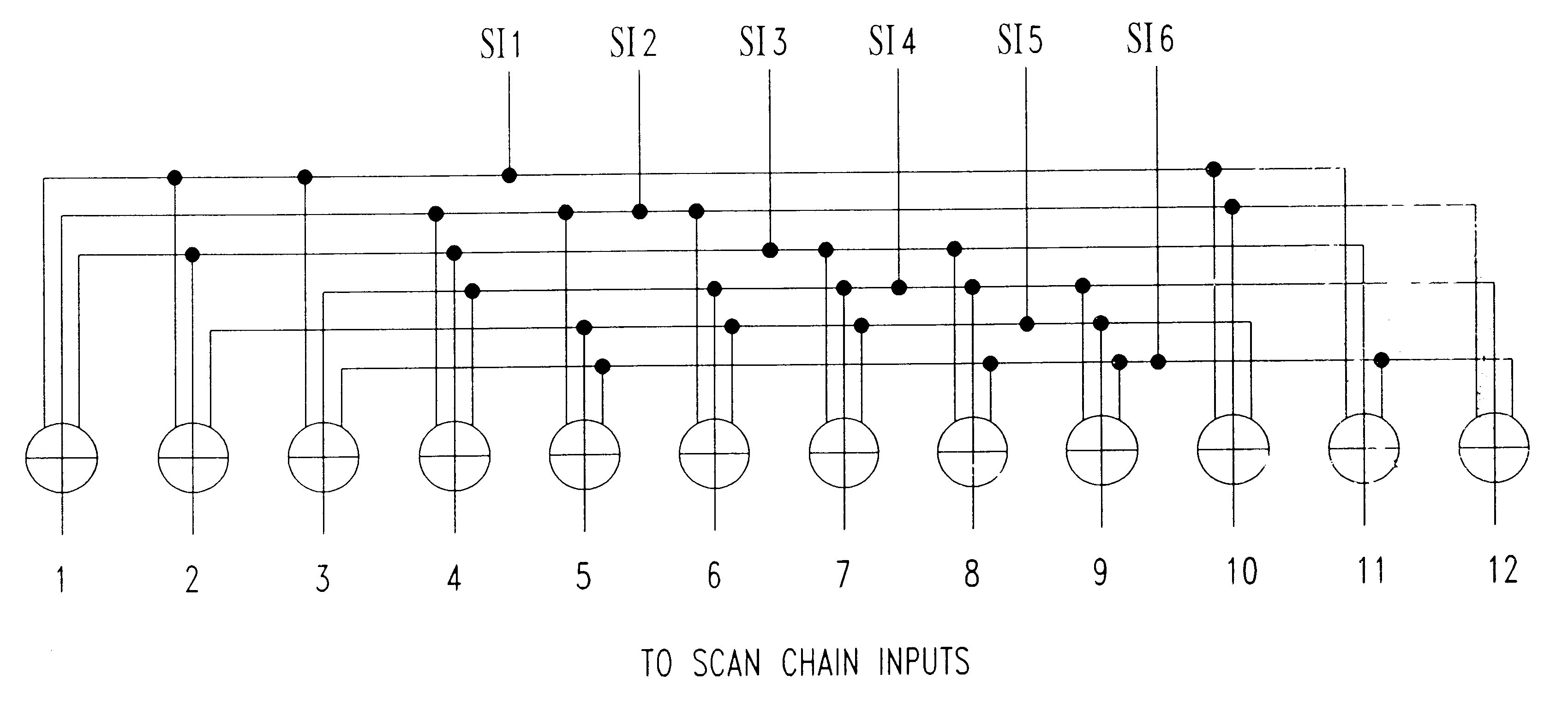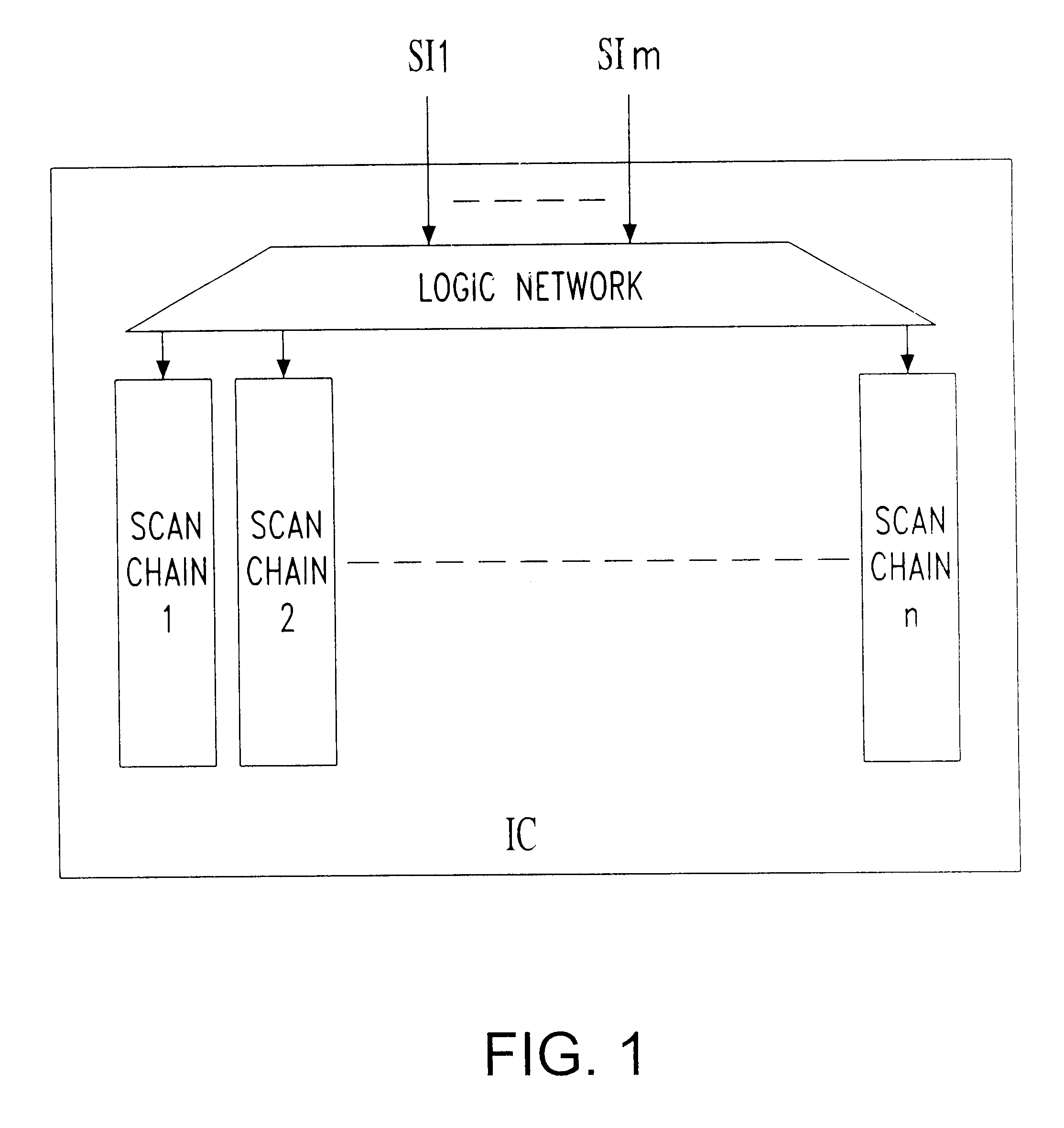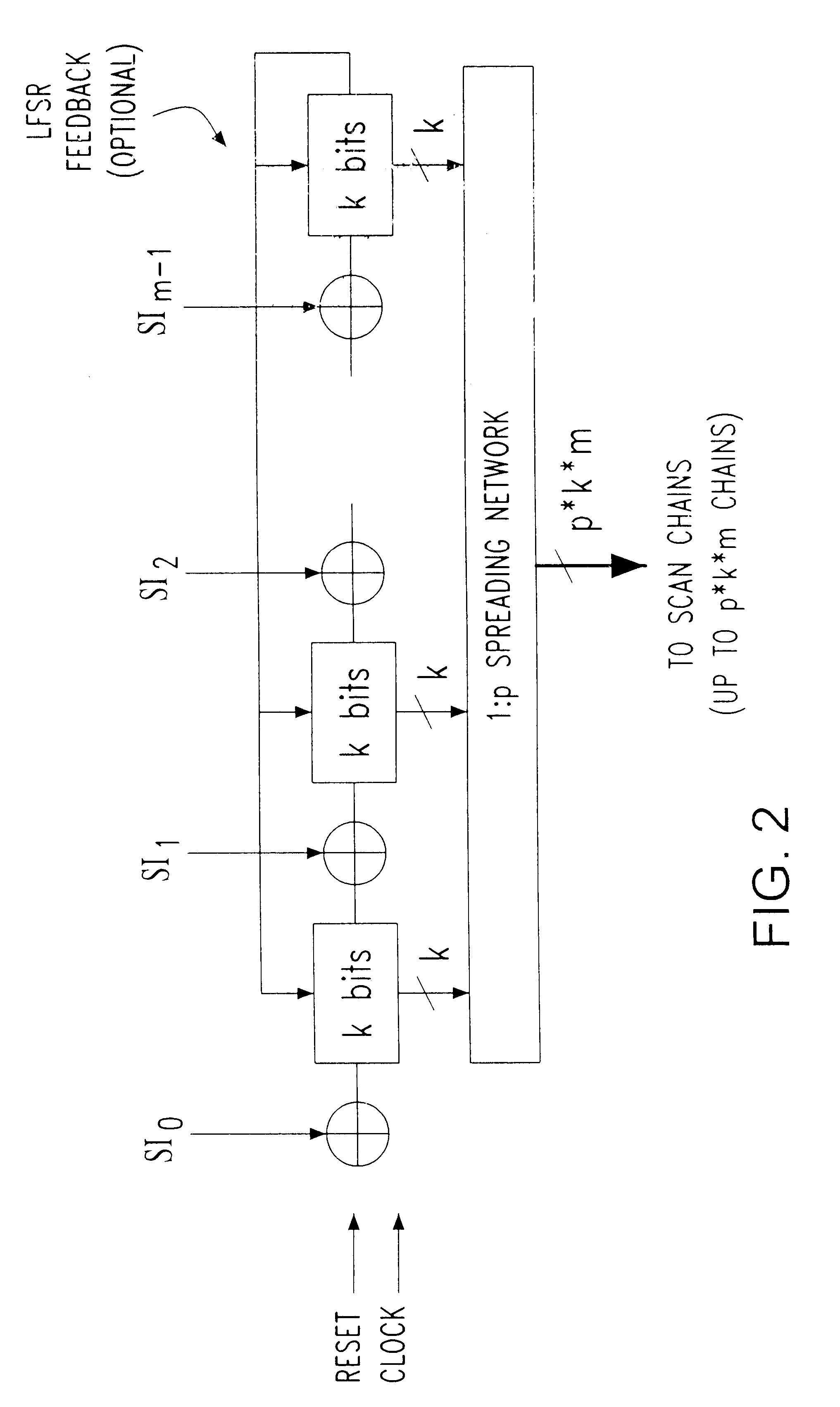Real-time decoder for scan test patterns
a real-time decoder and scan test technology, applied in the field of real-time decoder for scan test patterns, can solve the problems of limiting the maximum number of scan chains and the shift cycle rate, requiring more than one complete load, and longer scan chains, so as to achieve cost-effective integration
- Summary
- Abstract
- Description
- Claims
- Application Information
AI Technical Summary
Benefits of technology
Problems solved by technology
Method used
Image
Examples
Embodiment Construction
The integrated logic network (i.e., decoder) makes it possible to replace the fully expanded, ready-to-use test stimulus data used for conventional scan testing in the ATE with a more compact encoded data. Only the much smaller amount of encoded data is stored in the archival storage from where it is transferred and loaded into the ATE buffer memory without prior decoding the data. The ATE delivers the test stimulus data in its compact encoded form to the scan PIs of the circuit under test without any additional data transformations performed by the ATE. No special software and / or hardware support is required by the ATE. The encoded data is expanded in real-time by the integrated decoder within the circuit under test and a fully decoded test stimulus data word is loaded into the internal scan chains with every scan clock cycle.
The integrated decoder network to be described hereinafter is inserted within the circuits under test between a certain number of external scan Primary Inputs...
PUM
 Login to View More
Login to View More Abstract
Description
Claims
Application Information
 Login to View More
Login to View More - R&D
- Intellectual Property
- Life Sciences
- Materials
- Tech Scout
- Unparalleled Data Quality
- Higher Quality Content
- 60% Fewer Hallucinations
Browse by: Latest US Patents, China's latest patents, Technical Efficacy Thesaurus, Application Domain, Technology Topic, Popular Technical Reports.
© 2025 PatSnap. All rights reserved.Legal|Privacy policy|Modern Slavery Act Transparency Statement|Sitemap|About US| Contact US: help@patsnap.com



